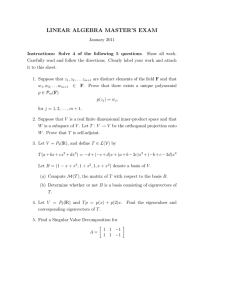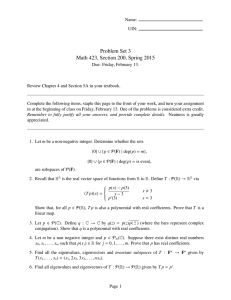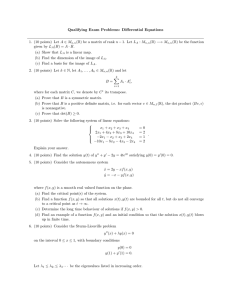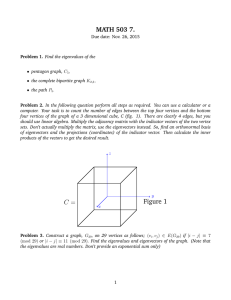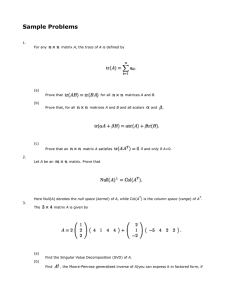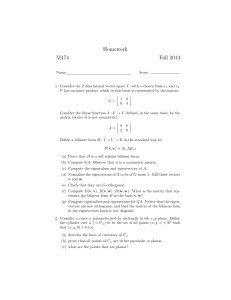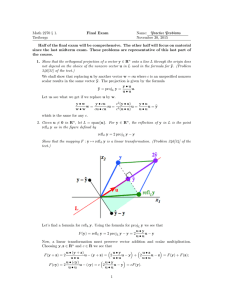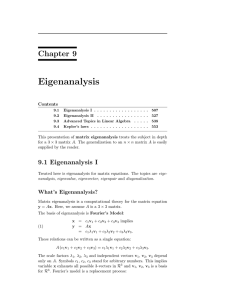PhD Preliminary Qualifying Examination: Applied Mathematics
advertisement
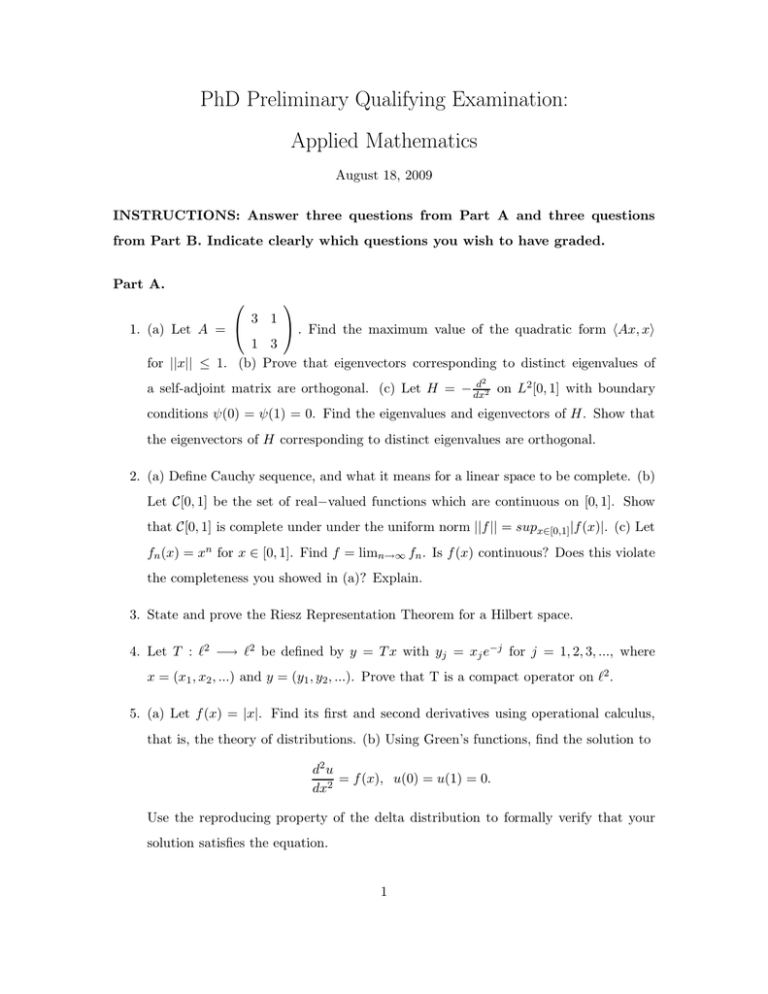
PhD Preliminary Qualifying Examination: Applied Mathematics August 18, 2009 INSTRUCTIONS: Answer three questions from Part A and three questions from Part B. Indicate clearly which questions you wish to have graded. Part A. 1. (a) Let A = 3 1 . Find the maximum value of the quadratic form !Ax, x" 1 3 for ||x|| ≤ 1. (b) Prove that eigenvectors corresponding to distinct eigenvalues of 2 d 2 a self-adjoint matrix are orthogonal. (c) Let H = − dx 2 on L [0, 1] with boundary conditions ψ(0) = ψ(1) = 0. Find the eigenvalues and eigenvectors of H. Show that the eigenvectors of H corresponding to distinct eigenvalues are orthogonal. 2. (a) Define Cauchy sequence, and what it means for a linear space to be complete. (b) Let C[0, 1] be the set of real−valued functions which are continuous on [0, 1]. Show that C[0, 1] is complete under under the uniform norm ||f || = supx∈[0,1]|f (x)|. (c) Let fn (x) = xn for x ∈ [0, 1]. Find f = limn→∞ fn . Is f (x) continuous? Does this violate the completeness you showed in (a)? Explain. 3. State and prove the Riesz Representation Theorem for a Hilbert space. 4. Let T : "2 −→ "2 be defined by y = T x with yj = xj e−j for j = 1, 2, 3, ..., where x = (x1 , x2 , ...) and y = (y1 , y2 , ...). Prove that T is a compact operator on "2 . 5. (a) Let f (x) = |x|. Find its first and second derivatives using operational calculus, that is, the theory of distributions. (b) Using Green’s functions, find the solution to d2 u = f (x), u(0) = u(1) = 0. dx2 Use the reproducing property of the delta distribution to formally verify that your solution satisfies the equation. 1 Part B. 1. Formulate and prove the Maximum Modulus Theorem. 2. Suppose f (z) is analytic in some neighborhood of the point z0 without the point z0 itself; let z0 be an essential singularity of f (z). Show that for any complex number C, there is a sequence of points zn (n = 0, 1, 2, ...) such that zn → z0 and f (zn ) → C. (In other words, in every neighborhood of an essential singularity, the function f (z) is arbitrary close to every complex number.) 3. Evaluate the integral I= % +∞ % ∞ 2 eiax dx −∞ (a is a positive parameter). 4. Evaluate the integral I= 0 xα dx (x2 + 1) (where α is a parameter, such that the integral converges). 5. Obtain the first two terms of the asymptotic expansion of I(k) = % 5 0 √ e−kt dx, t2 + 2t k is real and k → +∞. 2
